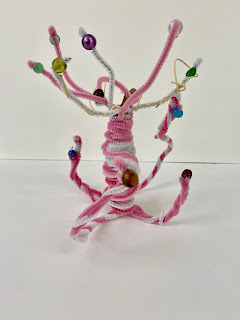"I'm not in the mood to do anything today," one tired high school student said today. So I scrapped the plan, and made her an offer she couldn't refuse. "Let's melt crayons."
While placing the crayons in the order of the color spectrum is a popular thing to do, I think it's better to mix it up a little bit. Change the order of the colors or the placement on the canvas. And don't turn your nose up at neutral colors, such as grays, tans, black and white.
Of course white helps the colors show bright, but you can use any color for some richer under tones. We had mat board in a variety of colors.














